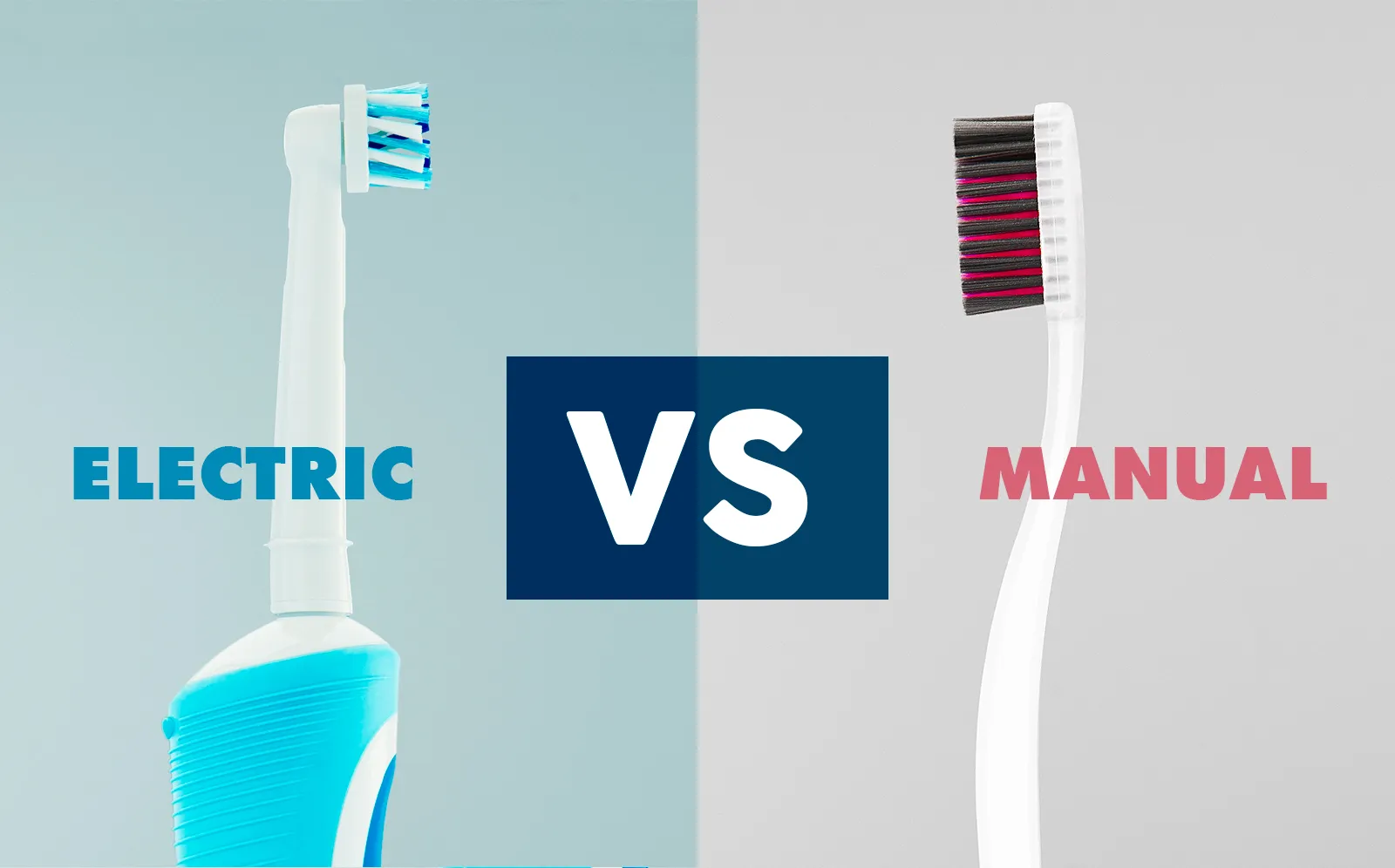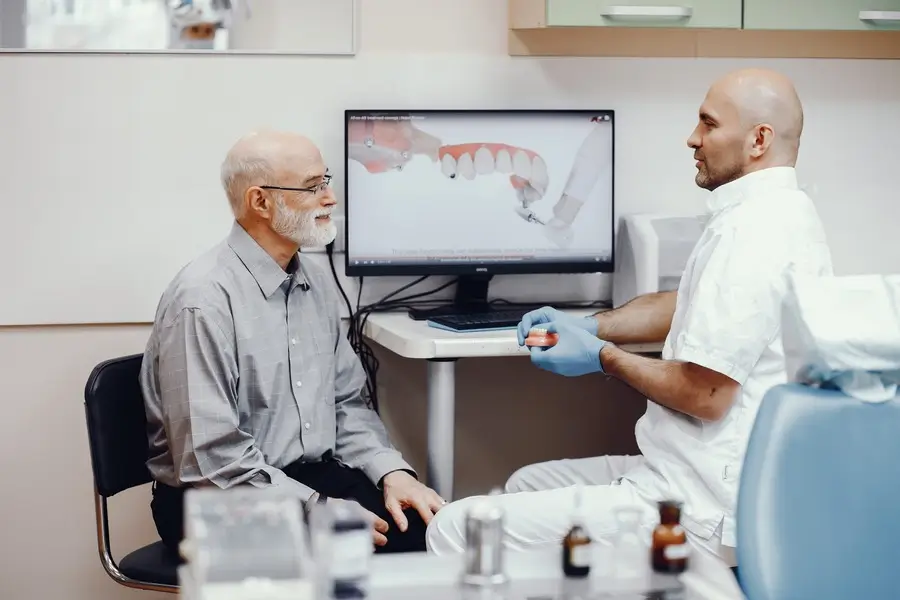One of the most common questions patients ask their dentist is whether an electric toothbrush is better than a manual one. With so many options available today, it’s easy to wonder if switching to an electric brush really makes a difference. The truth is, both electric and manual toothbrushes can effectively clean your teeth as long as you use the right technique and brush consistently.
In this article, we’ll break down the advantages and disadvantages of each type, helping you decide which toothbrush best suits your oral health needs, lifestyle, and preferences.
Brushing your teeth isn’t just about keeping your smile bright it’s essential for removing plaque, the sticky film of bacteria that builds up on your teeth every day. If not removed, plaque can harden into tartar, leading to gum disease, cavities, and bad breath. No matter which toothbrush you use, the key to a healthy mouth is brushing properly and consistently. Using the correct technique gentle circular motions for at least two minutes, twice a day is just as important as the type of brush you choose.
Electric toothbrushes use powered movements such as rotating, oscillating, or sonic vibrations to clean teeth more efficiently. These rapid motions help loosen and remove plaque from hard-to-reach areas, often requiring less effort than manual brushing.
Many modern electric toothbrushes also include smart features designed to improve your brushing habits. Common features include:
These features make electric toothbrushes especially helpful for people who need extra guidance or motivation to maintain consistent oral hygiene.
Manual toothbrushes rely entirely on your hand movements and brushing technique to clean your teeth. This means the effectiveness of a manual brush depends on how thoroughly and consistently you brush using gentle, circular motions and reaching all tooth surfaces.
One of the biggest advantages of manual toothbrushes is their simplicity and affordability. They’re easy to use, inexpensive, and available almost anywhere, from grocery stores to pharmacies. With so many sizes, bristle types, and designs to choose from, it’s easy to find one that fits your comfort and needs.
Electric toothbrushes provide several powerful benefits that make them a popular choice for people of all ages. They not only simplify daily oral care but also help improve brushing habits and overall dental health.
The high-speed oscillating, rotating, or sonic movements of electric toothbrushes are proven to remove more plaque than manual brushing. This helps reduce the risk of gum inflammation, gingivitis, and tartar buildup, especially in hard-to-reach areas such as the back molars or along the gumline.
Most electric toothbrushes include built-in timers that signal when you’ve brushed for the full two minutes the dentist-recommended duration. Some even divide the time into 30-second intervals for each quadrant of your mouth, ensuring balanced and thorough cleaning every time.

Advanced models come with pressure sensors that alert you when you’re brushing too hard, preventing gum recession or enamel wear. This makes electric toothbrushes ideal for people with sensitive teeth or delicate gums. Ideal for People with Special Needs or Limited Mobility:Individuals with braces, dental implant, arthritis, or limited hand dexterity often find electric toothbrushes easier to handle. Since the brush head does most of the motion, it requires less effort and coordination, leading to more consistent cleaning results.
Motivates Better Brushing Habits:
Many electric toothbrushes connect to smartphone apps that track brushing habits, provide real-time feedback, and even reward good performance turning brushing into an interactive experience. This technology helps users stay motivated and mindful about their oral care routine.
Fun and Engaging for Kids:
Electric toothbrushes designed for children often feature colorful designs, music, or lights, making brushing a fun daily ritual rather than a chore. This helps kids build strong oral hygiene habits from an early age.
Overall, electric toothbrushes combine technology, convenience, and effectiveness, making them an excellent investment for anyone looking to upgrade their oral care routine and achieve a cleaner, healthier smile.
Benefits of Manual Toothbrushes
Manual toothbrushes remain a popular choice for many people because of their simplicity and practicality. Here are some key advantages:
Affordable and Easily Available: Manual toothbrushes are inexpensive and can be found almost anywhere, making them accessible for everyone.
No Charging or Batteries Required: They’re ready to use anytime, with no need for electricity or battery replacements.
Effective with Proper Technique: When used correctly brushing for two minutes with gentle, circular motions they can clean just as effectively as electric toothbrushes.
Lightweight and Travel-Friendly: Compact and easy to pack, manual brushes are perfect for travel or on-the-go brushing.
Which One Is Better for You?
When deciding between an electric and a manual toothbrush, the best choice depends on your personal needs and habits.
Which One Is Better for You?
Choosing between an electric and a manual toothbrush ultimately depends on your individual needs, habits, and preferences. Each has its own strengths, and understanding them can help you make a decision that supports your long-term oral health.
Choose an Electric Toothbrush if:
You have braces, gum problems, or limited hand mobility and need extra help cleaning effectively. Electric toothbrushes are especially beneficial for people with arthritis or other dexterity challenges, as the powered motion reduces the need for vigorous hand movement. You appreciate built-in features such as timers, pressure sensors, and multiple cleaning modes that help improve brushing habits. These features encourage consistency and prevent issues like brushing too hard or too quickly.
You enjoy advanced technology that can guide you toward better oral care. Some electric models connect to smartphone apps that give feedback on missed areas, helping you perfect your brushing technique. You want a more efficient and effortless clean that requires less physical effort and ensures thorough plaque removal especially helpful if you tend to rush or struggle to maintain consistent brushing pressure.
Choose a Manual Toothbrush if:
You already have excellent brushing technique and consistently brush for two minutes twice a day using proper circular motions. You prefer simplicity and control, enjoying a more hands-on approach without relying on technology or charging. You value affordability and convenience manual toothbrushes are inexpensive, available everywhere, and easy to replace. You travel frequently and prefer a lightweight, portable brush that doesn’t require batteries or charging cables.
In the end, there’s no one-size-fits-all answer. The best toothbrush is the one you’ll use properly and consistently. What truly matters is maintaining a good brushing technique, brushing at least twice a day with fluoride toothpaste, and pairing your routine with regular flossing and dental check-ups.
If you’re still unsure which type suits you best, ask your dentist for personalized advice based on your oral health, lifestyle, and preferences. They can recommend the ideal toothbrush electric or manual to help you maintain a healthy, confident smile every day.
Dentist Recommendations for Best Results

No matter which toothbrush you choose electric or manual following proper dental care habits is essential to maintaining healthy teeth and gums. Dentists agree that the right brushing routine, combined with good oral hygiene practices, plays a much bigger role in your dental health than the type of brush itself.
Here’s what dental professionals recommend for achieving the best results:
Brush Twice a Day for Two Minutes
Spend at least two minutes brushing each morning and night to thoroughly remove plaque and food particles. Divide your mouth into four sections and spend 30 seconds on each to ensure even cleaning. Don’t forget to gently brush along the gumline and the back of your teeth, where plaque often hides.
Replace Your Toothbrush or Brush Head Regularly:
Over time, bristles wear down and lose their effectiveness. Dentists suggest changing your manual toothbrush or electric brush head every 3–4 months, or sooner if the bristles are bent, frayed, or discolored. Fresh bristles clean better and are gentler on your gums.
Use Fluoride Toothpaste:
Fluoride is a natural mineral that helps strengthen tooth enamel, making it more resistant to decay and acid attacks. Always choose a toothpaste with fluoride and the ADA (American Dental Association) seal of approval for the best protection.
Floss Once a Day:
Brushing alone can’t remove all plaque and debris from between your teeth. Daily flossing or using interdental brushes helps clean those tight spaces, preventing gum disease and cavities in areas your toothbrush can’t reach.
Clean Your Tongue:
Your tongue can harbor bacteria that cause bad breath and contribute to plaque buildup. Use a tongue scraper or your toothbrush to gently clean your tongue every time you brush.
Maintain a Healthy Diet:
Limit sugary snacks, sticky candies, and acidic beverages, as they can erode enamel and promote tooth decay. Instead, eat a balanced diet rich in calcium, vitamin D, and fiber to keep your teeth and gums strong.
Rinse with Mouthwash (Optional):
Using an antibacterial or fluoride mouthwash can help reduce plaque, freshen breath, and provide an extra layer of protection against cavities and gum disease.
Visit Your Dentist Regularly:
Schedule a dental check-up and professional cleaning at least twice a year. These visits allow your dentist to remove hardened tartar, check for early signs of decay or gum disease, and provide personalized advice to keep your oral health on track.
Consistent care at home, supported by regular professional cleanings, is the foundation of long-term oral health. Whether you use an electric or manual toothbrush, what matters most is maintaining a thorough, gentle, and regular routine. By following these dentist-recommended habits, you’ll enjoy a cleaner mouth, healthier gums, and a brighter, more confident smile.
Conclusion
Both electric and manual toothbrushes can effectively maintain healthy teeth and gums when used correctly and consistently. The best choice ultimately depends on your personal comfort, dental needs, and budget. While electric toothbrushes offer convenience, advanced cleaning technology, and built-in features to guide your brushing, manual toothbrushes provide simplicity, control, and affordability.
Remember the real secret to great oral health isn’t the brush itself, but how you use it. Brushing for two minutes twice a day, using fluoride toothpaste, and following proper technique are what truly make the difference. Pair that with daily flossing and regular dental check-ups, and you’ll keep your smile strong, clean, and confident for years to come.
If you’re still unsure which toothbrush is best for your unique needs, our dental team is here to help. At your next visit, we can assess your oral health, discuss your preferences, and recommend the toothbrush type that will give you the best results so you can enjoy a healthy, radiant smile every day.
















